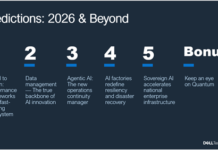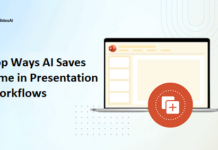Excerpt: Artificial intelligence (AI) is one of the most fascinating and talked-about topics in the tech world today. According to Market.us, the Global Artificial Intelligence Market was valued to be worth USD 129.28 billion in 2022. From 2023 to 2032, it is estimated to reach USD 2967.51 billion growing at a CAGR of 36.8%. But while there is a lot of excitement around AI, there is also a lot of confusion. What exactly is AI? How does it work? And what are its implications for the future? With the rapid development of artificial intelligence (AI), it is essential to understand the different types of AI, their limitations, and how they can be used.
Table of contents:
- Introduction
- What is artificial intelligence?
- The four pillars of artificial intelligence
- Future of artificial intelligence
- Conclusion
Introduction:
There are four main types of AI: machine learning, natural language processing, computer vision, and robotics. Each type has different applications and uses cases. In this article, we will answer some of these questions by looking at the four pillars of AI: machine learning, natural language processing, robotics, and computer vision. We will also explore some of AI’s potential applications in the future, how AI is changing various industries, and what the future may hold for this technology.
What is artificial intelligence?
Artificial intelligence is still in its early developmental stages, but it has the potential to revolutionize many industries and aspects of our lives. So far, AI has succeeded in narrow tasks such as playing chess and Go, driving cars, and understanding human speech. But its potential goes far beyond these applications.
Artificial intelligence refers to systems or machines’ ability to mimic human intelligence to perform tasks based on the information that AI collects and can iteratively improve it. AI is displayed in several forms.
Candidates who want to advance their career, Artificial Intelligence Training and Certification Course is the best option.
In general, AI can also be defined as the ability of a computer or machine to perform tasks that would typically require human intelligence, such as visual perception, natural language processing, and decision-making. This broad definition covers a lot of ground, so let’s break it down into four main pillars: machine learning, computer vision, robotics, and natural language processing.
- Machine learning is a branch of artificial intelligence (AI) and computer science in which computer algorithms use the data to form anticipative models.
- Computer vision is the ability of computers to see and interpret the world around them.
- The ability of a computer to perceive human language and give appropriate and sensible responses is natural language processing
- The study to create effective and intelligent robots is robotics. It is the primary domain of artificial intelligence.
The four pillars of artificial intelligence
Artificial intelligence is still in its infancy, but it is already revolutionizing how we live and work. The four main pillars of artificial intelligence are machine learning, natural language processing, computer vision, and robotics.
1. Machine learning – The process of teaching computers to learn from data without any definite programming is machine learning. It can automatically improve if given more data by building algorithms. This can recognize patterns, make predictions, and make decisions. For example, Google Photos uses machine learning to automatically tag your photos with subjects like “sunset” or “cats.”
2. Natural language processing – The ability of computers to understand human language and respond in a way that is natural for humans is natural language processing. This can be used for tasks such as automatic translation, analysing text data, or identifying the sentiment of a text. For example, Google’s search algorithm uses natural language processing to understand what you’re searching for and return relevant results.
3. Computer vision – The ability to interpret and understand digital images of a computer is computer vision. This involves analyzing an image and extracting information from it. Object recognition or facial recognition are some of the tasks for which computer vision is used. For example, Facebook uses computer vision to tag your friends in photos you upload automatically.
4. Robotics – Robotics is a branch of AI composed of mechanical engineering, electrical engineering, and computer science in applying robots to automate tasks. This can be used for tasks such as manufacturing or logistics. The robots are designed to achieve a specific task, and these machines are controlled by electrical components which provide them with power. In robotics, the level of computer programs decides when what, and how robots will perform.
Future of artificial intelligence
Artificial intelligence is progressing and getting more advanced daily, and there is no doubt about it. AI forms the base of computer learning, and thus it is essential. AI can procure a considerable amount of data and utilize it to make optimal decisions in a fraction of the time compared to humans. With the rapid expansion of AI capabilities and businesses. Individuals are increasingly looking to adopt AI technologies to stay ahead of the curve.
There are four key areas where AI is likely to have a significant impact in the future:
1. Automation of knowledge work: The automation of knowledge work is an area of artificial intelligence that is seeing rapid growth and development. This is due to the fact that artificial intelligence technology is becoming more sophisticated and capable of completing tasks that were once thought to require human intelligence. One of the most promising applications of this technology is in the field of customer service. Many companies are already using automated customer service agents to provide essential customer support, and this trend is expected to grow. As artificial intelligence technology evolves, more advanced customer service forms will likely be possible, such as providing personalized recommendations or troubleshooting complex issues.
AI will increasingly automate tasks that require human expertise, such as data analysis, decision-making, and customer service.
2. Enhancement of human cognitive abilities: The use of artificial intelligence (AI) has the potential to enhance human cognitive abilities in several ways. AI can help to process and make sense of large amounts of data more quickly and effectively than we could on our own. It can also help to identify patterns and relationships that one might not be able to see with the naked eye. In addition, AI can provide us with new insights and perspectives that we would otherwise never have access to.
All of this means that, when used correctly, AI can make us more innovative, more efficient, and better able to solve complex problems. For these reasons, many businesses and organizations are investing heavily in AI research and development. AI tools will augment human cognitive abilities, such as memory, pattern recognition, and problem-solving.
3. Development of new industries: The rapid development of AI technologies has led to significant advances in industrial automation and the application of AI to various domains such as finance, healthcare, manufacturing, transportation, and retail. These advancements have enabled businesses to achieve operational efficiencies and scale quickly. However, the development of new industries by AI is still in its early stages. Several challenges need to be addressed before AI can be used to develop new industries effectively.
With all the challenges being rectified, AI will give rise to entirely new industries and business models, such as autonomous vehicles, personalized medicine, and intelligent assistants.
4. Transformation of existing industries: The advent of artificial intelligence (AI) is rapidly transforming numerous industries, with wide-ranging implications for businesses and society. AI will also cause significant disruption in many existing industries, such as retail, transportation, and manufacturing. One area that is particularly ripe for disruption is the insurance sector.
The tasks of the insurance sector are time-consuming and often require significant human resources. However, AI can automate many of these tasks, freeing employees to focus on more strategic initiatives.AI can help insurers assess risk better and identify fraud.
By analyzing large data sets, AI can reveal patterns that would be undetectable to the human eye. This information can then be used to adjust premiums and fraud detection protocols accordingly. For businesses, it represents an opportunity to improve efficiency and bottom-line results. For consumers, it could lead to lower premiums and improved coverage. Ultimately, AI promises to revolutionize the insurance sector and the wider world profoundly.
Conclusion
With the advancement of AI technology, many people are concerned around the globe due to its limitations like the high cost of AI operation, less creativity as it lacks the human touch, unemployment as chatbots and robots are replacing humans, laziness in humans as addiction to AI is resulting in less usage of the brain and being emotionless as it lacks human connection. Despite these restrictions, artificial intelligence is the most exciting thing around the tech world, and its potential in the future is changing various industries’ perceptions and working culture.
With the description of AI and its pillars in this article, we hope that you have gained valuable insight into what makes artificial intelligence unique, attractive, and the talk of the town. The impact of Al on the global industry is indisputable. Artificial intelligence will offer something to everyone in the future that will fit their needs perfectly. AI is changing various industries and has great potential applications to create a better world in the future.
Author Bio
Archit Gupta is a Digital Marketer, and a passionate writer, who is working with MindMajix, a top global online training provider. He also holds in-depth knowledge of IT and demanding technologies such as Business Intelligence, Salesforce, Cybersecurity, Software Testing, QA, Data analytics, Project Management and ERP tools, etc.


















